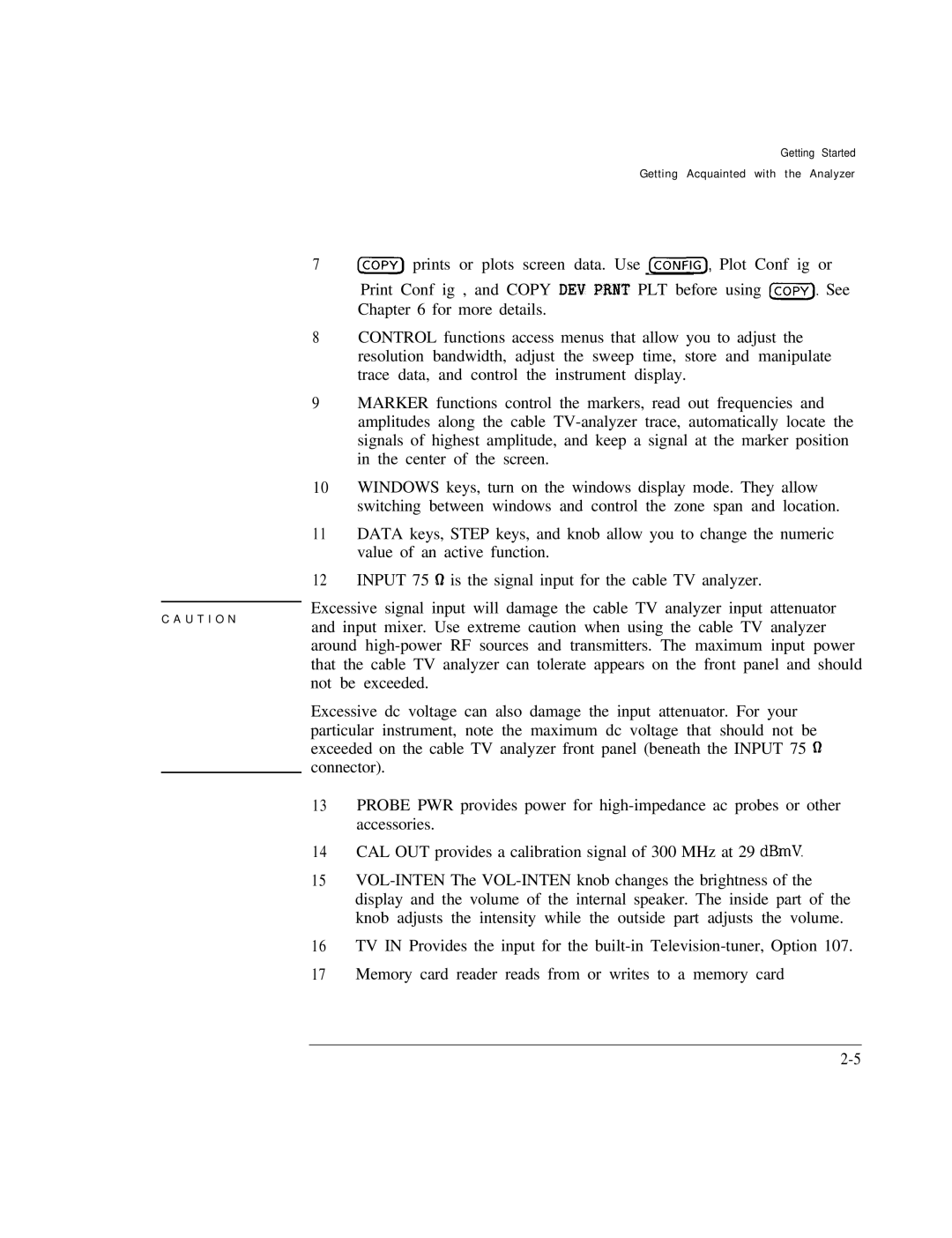
Getting Started
Getting Acquainted with the Analyzer
C A U T I O N
7 IcoPv] prints or plots screen data. Use [CONFIG], Plot Conf ig or
Print Conf ig , and COPY DEV PRMT PLT before using IcoPv]. See Chapter 6 for more details.
8CONTROL functions access menus that allow you to adjust the resolution bandwidth, adjust the sweep time, store and manipulate trace data, and control the instrument display.
9MARKER functions control the markers, read out frequencies and amplitudes along the cable
10WINDOWS keys, turn on the windows display mode. They allow switching between windows and control the zone span and location.
11 DATA keys, STEP keys, and knob allow you to change the numeric value of an active function.
12 INPUT 75 D is the signal input for the cable TV analyzer.
Excessive signal input will damage the cable TV analyzer input attenuator and input mixer. Use extreme caution when using the cable TV analyzer around
Excessive dc voltage can also damage the input attenuator. For your particular instrument, note the maximum dc voltage that should not be exceeded on the cable TV analyzer front panel (beneath the INPUT 75 62 connector).
13PROBE PWR provides power for
14CAL OUT provides a calibration signal of 300 MHz at 29 dBmV.
15
16TV IN Provides the input for the
17Memory card reader reads from or writes to a memory card
